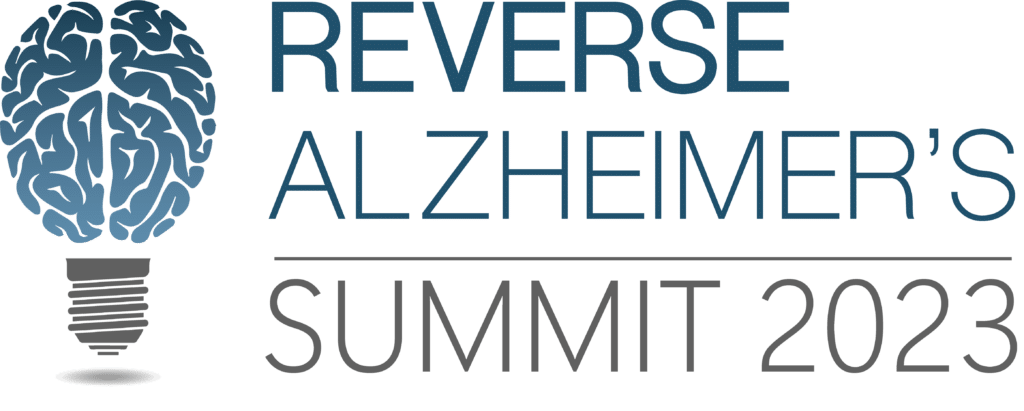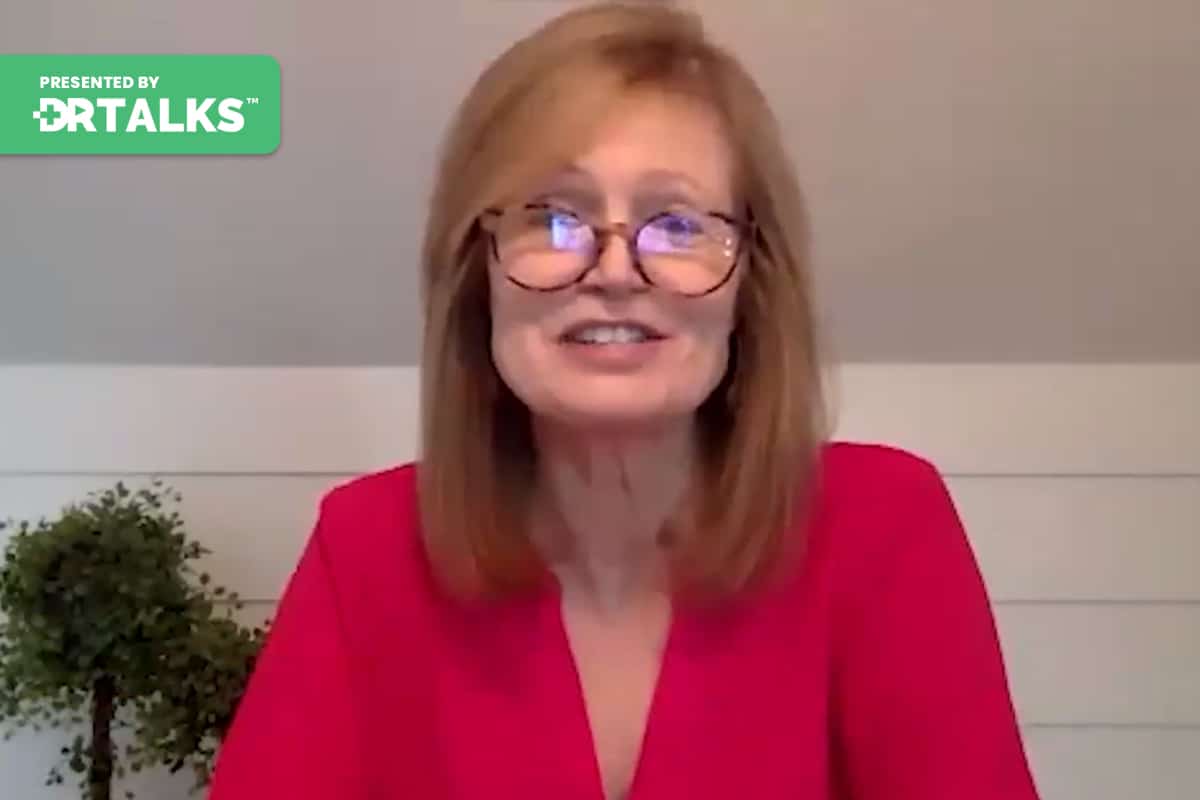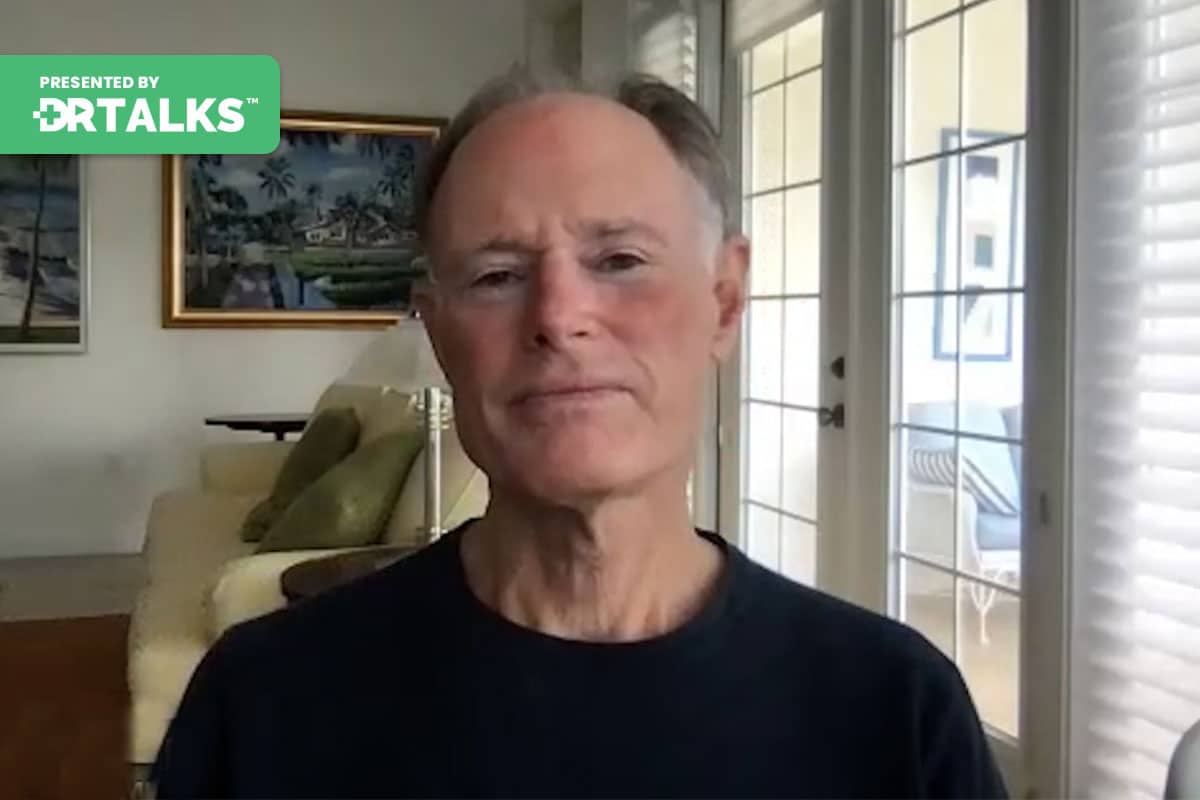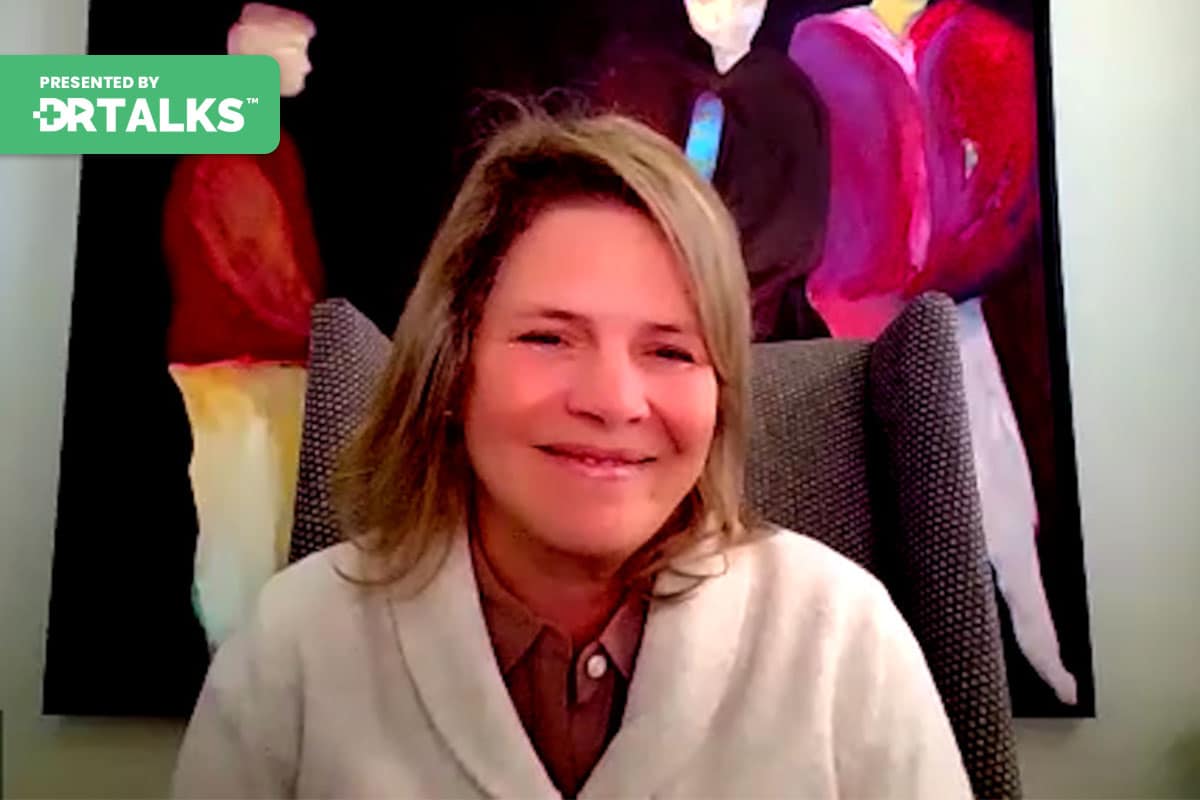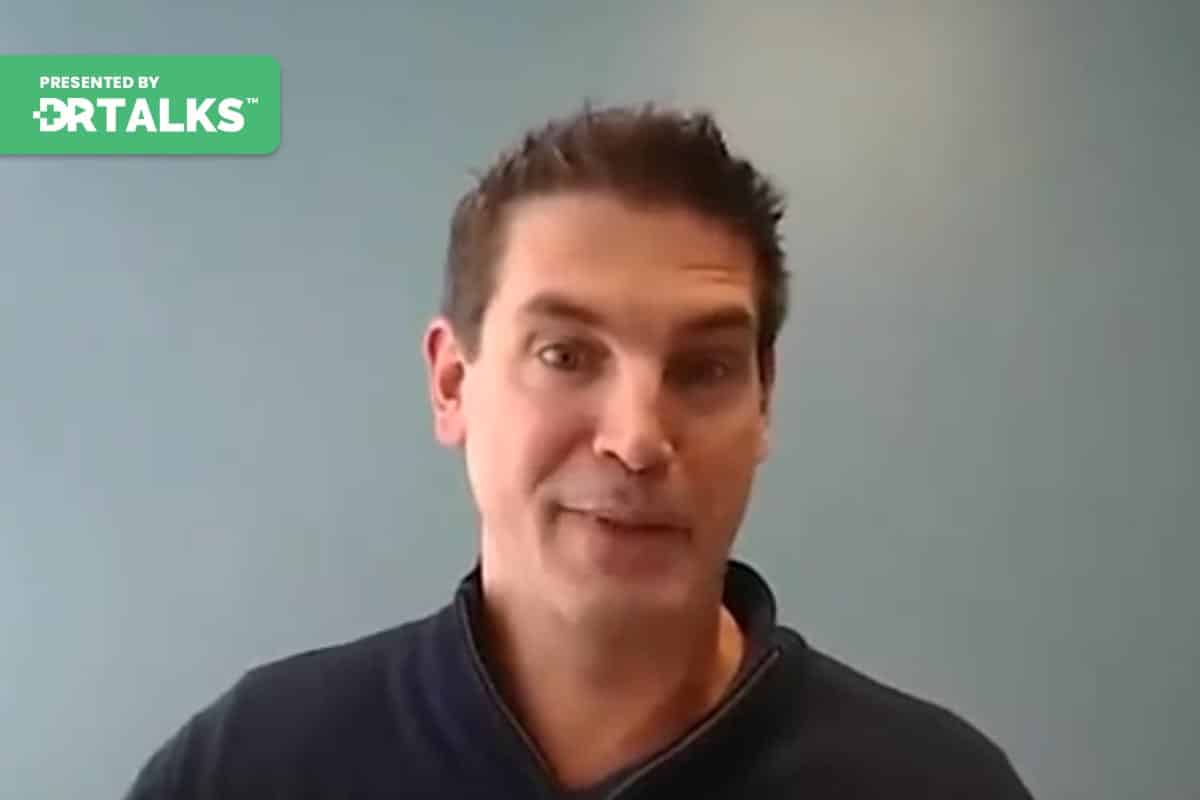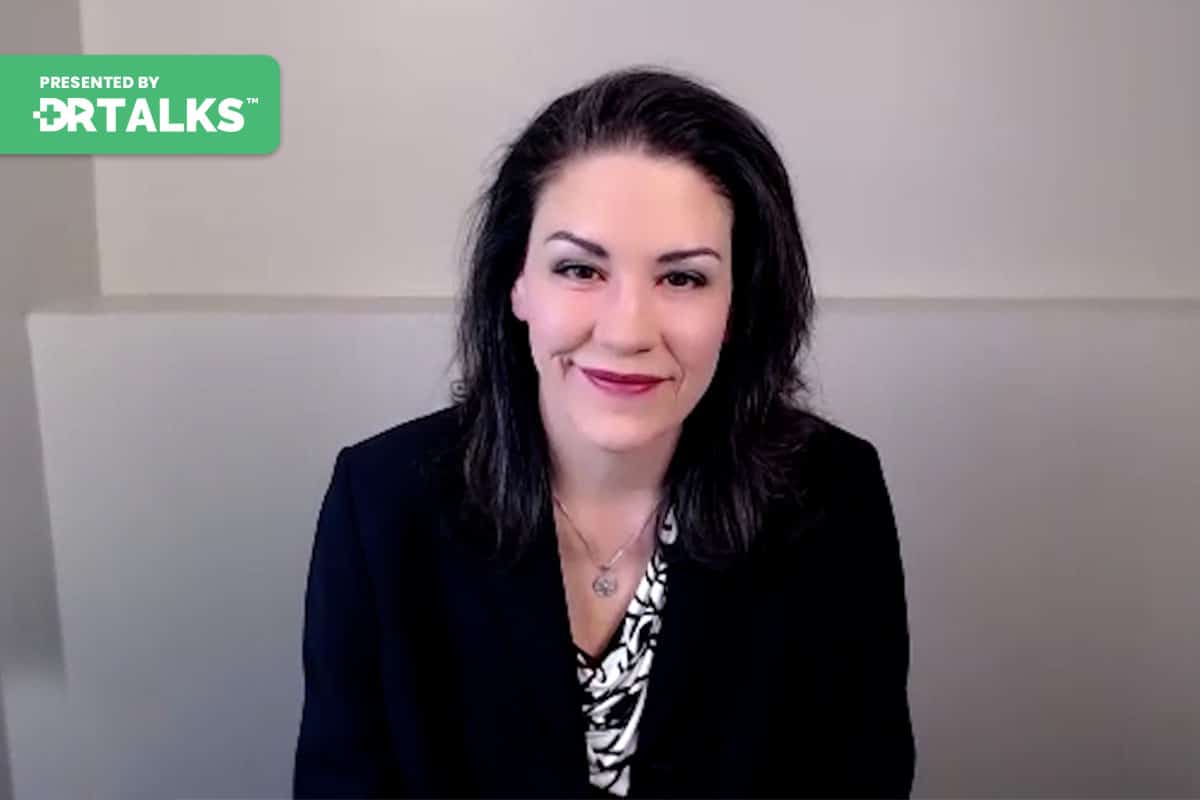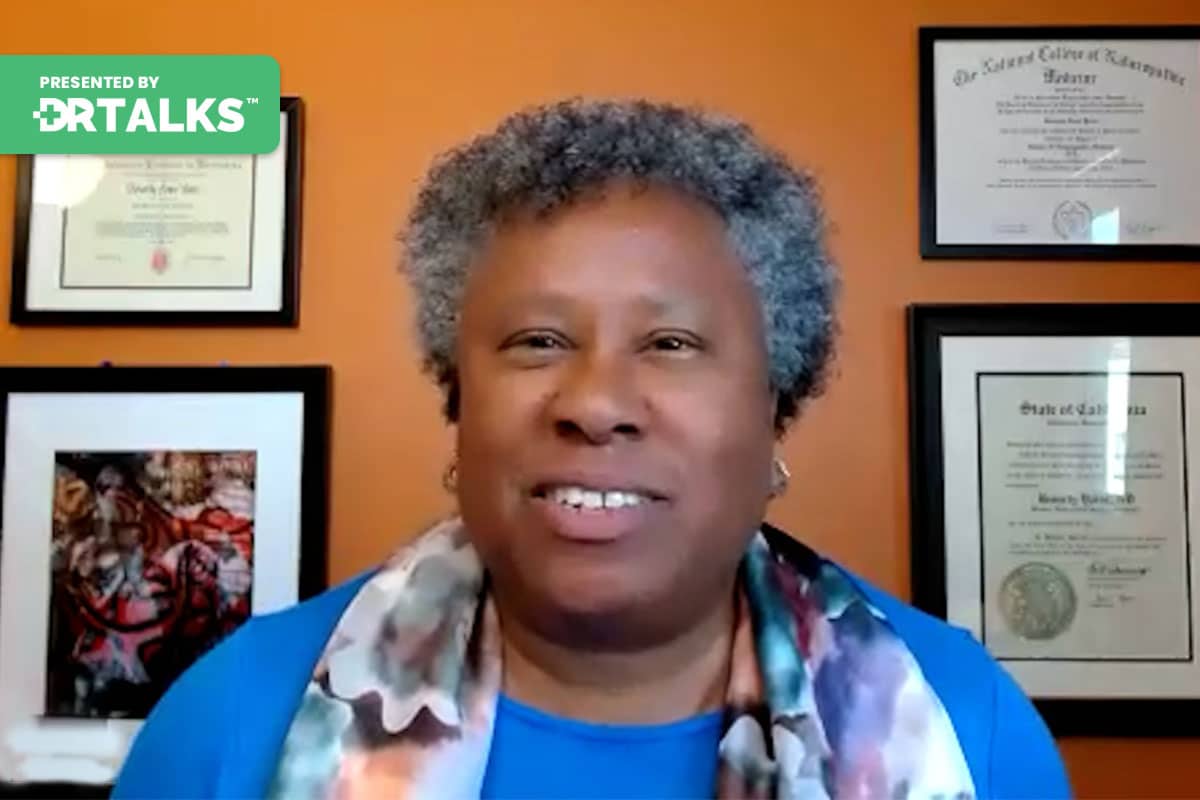Join the discussion below

Dr. Heather Sandison is the founder of Solcere Health Clinic and Marama, the first residential care facility for the elderly of its kind. At Solcere, Dr. Sandison and her team of doctors and health coaches focus primarily on supporting patients looking to optimize cognitive function, prevent mental decline, and reverse... Read More
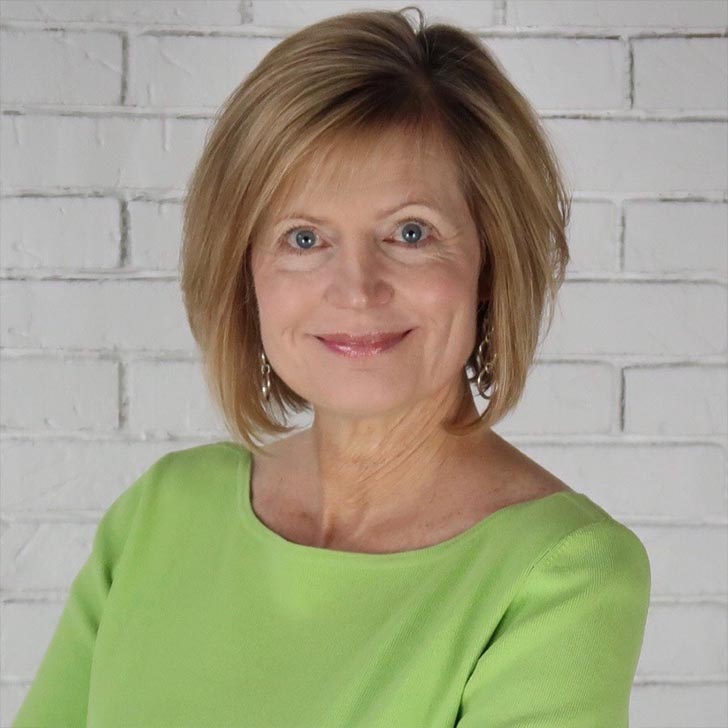
Julie is among the many who have recovered their cognitive health using the Bredesen protocol. Sharing the knowledge she gained from reversing her cognitive decline, she’s collaborated with Dr. Bredesen and his integrative physician wife, Dr. Aida Lasheen Bredesen, to write the handbook portion of the New York Times bestseller... Read More
Julie Gregory reversed her cognitive issues and provides a path for healing
- Understand the genetic risks of ApoE4
- Learn about a personal path to healing and helping others
- Understand the resources available to help you and your loved ones
Related Topics
Aging, Alzheimers, Brain, Brain Health, Chronic Illness, Cognitive, Personal Healthcare StoriesHeather Sandison, ND
Welcome to this episode of the Reverse Alzheimer’s Summit. I’m absolutely delighted to introduce you to my friend Julie Gregory. She is among the many who have recovered their cognitive health using the Bredesen Protocol. She is here to share her story with us today. She has shared the knowledge she has gained from reversing her cognitive decline through collaborating with Dr. Bredesen and his integrative physician, Dr. Aida Lasheen Bredesen, to write the handbook portion of the New York’s Times bestseller, The End of Alzheimer’s Program. She is the founder and president of the ApoE4.Info nonprofit, a grassroots organization of APOE4 carriers working to prevent and reverse Alzheimer’s disease. She also serves as the chief health liaison at Apollo Health. Julie integrates her background in journalism, public relations, and counseling with her passion and personal experience for cognitive health to serve as a Bredesen Protocol educator and an Alzheimer’s activist. Julie, thank you so much for taking the time to join us.
Julie Gregory
Thank you so much for having me. I’m so delighted to be here, to spread the message of hope.
Heather Sandison, ND
You and I both. You know, you are one of those just beacons of light and hope for those who are struggling at home with cognitive decline. Would you mind sharing how you got into this, your personal story?
Julie Gregory
No, I would be happy to share it. So almost 10 years ago, when I was about to turn 50, I did genetic testing through 23andMe and I learned that I had two copies of the APOE4 allele. And I do not know if your viewers are familiar with what that means or do you want me to describe that a little bit?
Heather Sandison, ND
Go ahead and describe it because I do not think everyone understands exactly what that means.
Julie Gregory
It took me a while to absorb it of course. So the APOE gene is short for the apolipoprotein gene and its primary function in the body is to carry fat but researchers have found that it is also very strongly correlated with Alzheimer’s. There are three different variants, there is E2 which appears to be protective. E3 which appears to be neutral and E4 which can predispose you to develop late-onset Alzheimer’s disease. If you have one copy, you have got a double or triple risk of developing Alzheimer’s. But if you have two copies like I do, you have like a twelvefold risk of developing Alzheimer’s and also at an earlier age. So when all that kinda soaked in, I was feeling frightened but I thought, maybe I have Alzheimer’s or I will get Alzheimer’s but surely there is a pill or something I could take. So I turned to the Alzheimer’s Association for information and right on their main webpage they said, Alzheimer’s can not be prevented, it is untreatable, it is incurable, it is progressive and most people are dead within 10 years of symptom onset. This was 10 years ago.
So as you can imagine, I was like this could be serious. This is a disease that is fatal for which there is no known treatment. It forced me to take a hard look at my cognition and I have been having senior moments, but I attributed them to my fast-paced lifestyle, to stress, to the period of menopause. Never in a million years, did I think of Alzheimer’s. But the symptoms I was experiencing, I remember driving home from work so I’m on a very familiar road. One that I take you know dozens of times a week and I looked up at the traffic light and for just a moment, I did not know where I was. It took me a minute before I recognized where I was and how to get home. That was not normal. I also began to run into people in this town where I had lived for the past 20 years, who knew me very well. And they would greet me in public with a hug and they would start talking about their families and they would ask about my family. I did not know who they were.
And I just fumbled my way through those conversations because I was terribly embarrassed and there are so many other little signs like that. But when I put that together with my high genetic risk, I finally revealed to my husband what was going on. And I fully expected him to say, you are blowing this out of proportion. Everything is fine. And he said, well, that explains a lot. So he had been having symptoms too. So that was pretty terrifying. I finally got up the courage to visit a local neurologist. And I told him the symptoms I was having, my high genetic risk. Do you wanna know what he said? He said good luck with that.
I asked what I could do to prevent my symptoms from getting worse or what I could possibly do to make things better. And he had absolutely nothing to offer me. So I’m still in this information gathering mode. I’m like mainstream medicine has nothing. And I decided I need to do cognitive testing. I need to quantify where I stand right now. And even with the deficits I knew I was experiencing, I thought my cognitive testing would be like in the 75th percentile. It was in the 35th percentile. And so I thought, well that has to be a mistake. I’m going to repeat this. So I was very well rested. I repeated the cognitive testing and I got the same result. So at that point, I recognized I may be in the early stages of Alzheimer’s, for which there is no known cure. And it was a terrifying period for me. The thing that ended up saving me was other carriers of the APOE4 gene. So 23andMe provided forums where we could gather, and we did, and we not only became a family to one another, a community, and a wonderful source of emotional support. We very quickly turned to science because in my case, I’m like, I’m 50 years old. There has to be something I can do to mitigate this. There has to be some diet, some lifestyle strategies.
I wanted to try to figure out the mechanism behind Alzheimer’s, which 10 years ago was a big ask and then tried to intervene in some way. And so along with this community of APOE4 carriers, we began doing that. We scoured the medical literature, we consulted with experts. And as I learned about new strategies, I began applying them. I started tweaking biomarkers. I started checking my fasting glucose, my fasting insulin, my HbA1C, my vitamin D, and my homocysteine. And if things were not looking like they were moving in the right direction, I would tweak them. I also radically changed my diet. So at that time I was eating, I guess a healthy version of the standard American diet, but it was high in carbs and low-fat, and it had led me to become insulin resistant. As I was learning more about this neuro fuel deficit that APOE4 carriers have, I was recognizing the fact that ketones could possibly be helpful. I started to shift my macronutrient ratios. The first thing I did was I stopped eating all processed and refined food. I just ate a clean whole food diet, nutrient-dense.
But then as I learned about the possible benefit of ketosis, I began to drop all starchy carbs, only ate non-starchy vegetables, and started using more healthy fats which for APOE4 carriers is tricky because we are also predisposed to heart disease and we hyper absorb dietary fat. At the time there was this huge debate in our community between high-fat and low-fat diets. But I eventually settled on a heavily plant-based, high-fat diet using healthy high fats, and adequate protein. I emphasize proteins high in DHA and choline. A lot of low mercury, wild-caught fish, and pastured eggs. And I also started to change the way I exercised. At that time I was doing something really stupid, in retrospect. I was doing a boot camp-style exercise program. I lived in a college town and I was competing with college girls. I was 50 years old trying to run the fastest mile and doing pushups and all this. And I recognized as an APOE4 carrier, I was really fragile.
I still exercised a lot, but I did it in a much more nurturing way. So instead of these grueling you know hour-long workouts, I would do hour-long hikes in nature where I had to intersperse walking and running. And it was just a beautiful meditative time for me. I also recognized my fragility and I made myself a priority. I opted for sleep and made sure I got seven to eight hours of quality sleep every night. For the first time in my life, I began to meditate. I knew I was in the fight of my life. So I was also praying a lot. I was really doing everything I can to cure my brain and to heal. I also wanted to challenge my brain. So I started doing daily brain training, and this is something else that I would not recommend to other people, but I began overly challenging myself. So if I did not beat my score from the day before I stuck with the brain training until I got a better score every single day. So that was a little bit stressful and that is probably not the best way to brain train. I also began to recognize the relationship between toxins and Alzheimer’s. I worked as hard as I could to make sure the air that I breathed was clean. The water that I was drinking was clean. The food that I ate was as cleanly sourced as possible. I recognized that my skin was my largest organ and all of us slather on sunscreen and other toxic lotions and cosmetics and toiletries without even thinking about it. So I started running everything I used through the Environmental Working Group, skin deep database to find the safest options. And finally, I began to take targeted supplements as I learned about their potential benefit, I started taking them. The first one I took was curcumin. And it was like a night and day difference. When I took curcumin for the first time, I took three different brands before I could tolerate it. At the time I was dealing with mass cell activation and I reacted to lots of different things, but once I found a brand I could tolerate, it was like the sun had come out and rainbows were there. I felt such a lift and that probably speaks to the amount of inflammation that was going on.
DHA was the other supplement I started taking next. Then I started taking supplements to reduce homocysteine and vitamin D and I just started taking things that made sense in a targeted way. And after doing all of this for a year, I repeated my cognitive testing and you would recall I started in the mid-30th percentile. I was scoring in the mid-90th percentile after putting all of these strategies together. And it dumbfounded me. It made me question, whether was I really experiencing cognitive decline. Was it other health issues contributing? I will never probably have the answer but I know that I have experienced a dramatic improvement. Around that time, I stumbled across Dr. Bredesen’s paper, reversal of cognitive decline and novel therapeutic program in which he did 10 case studies, nine of which reverse cognitive decline. And the thing that blew me away was not only was this well-respected Alzheimer’s researcher using very similar strategies to those that I and my APOE4 community had put together, but he had wonderful success with it. And it was enormous validation of the journey that I have been on. And I think in a much smaller way, my story is a validation of Dr. Bredesen’s whole approach.
Heather Sandison, ND
So many of us, I think in this community around dementia had been in that situation of being told for so long, there was nothing you could do, having this fear. You know I was terrified to see a dementia patient, like I can not help you. Why would you spend the time? And then I had a really similar experience with my first patient after being trained by Dr. Bredesen, where she had a two out of 30 on her MoCA, a very severe disease. And six, seven weeks later, she had a seven out of 30 on her MoCA. And I thought, you know she and her husband were so enthusiastic and they really took it and ran with it and got out of a moldy environment.
Started ballroom dancing, completely changed their diet, got into ketosis, and went organic. She took all the supplements and got on hormones. They did all she got all of her amalgams out. And I mean, they did all of this in the space of weeks. It was really impressive. And it changed noticeably her interaction with her husband, and how I interacted with her, and then we could measure it on her MoCA score. And I tell you, my first thought was, what did we do wrong last time? We must have mismeasured it. This is impossible. I was in disbelief and I think many of us have been there because there are so many intelligent, smart, amazing, gifted people who are still saying that. So there is nothing you can do. And it is great because, in the last 10 years, a lot has changed. And so the conversation is much more open. And I think there are fewer people in disbelief. And when you see it over and over and you have that experience of validation and we measure it over and over and we see it over and over, and we hear the stories. It is really this beacon of hope that there is so much that we can do.
Julie Gregory
Oh, I love that. I love your story. Yeah. It is so wonderful to know that there is a community of people that have reversed cognitive decline. And I think sharing the message just provides hope to everyone who’s listening today.
Heather Sandison, ND
And one thing your amazing story shares is that it takes some work.
Julie Gregory
Yeah.
Heather Sandison, ND
It is not, this is not as simple as swallowing a pill and being better the next day. This is a commitment to changes, challenging changes at a time when things are already overwhelming and challenging because of cognitive decline. So there is a lot. And yet the community is what helps us put these changes into practice. So tell us a little bit about the communities that you have created and how you have really taken this journey and created this purposeful work around supporting others.
Julie Gregory
That is a really great question. So that community on 23andMe, we eventually branched off and we created our own website. I think that was in October of 2013 and it is called ApoE4.Info and we dedicated ourselves to learning all we can about the APOE4 allele. How it affects health, and most importantly, what we can do to mitigate the pathological effects of APOE4. We eventually got nonprofit status and we regularly interact with researchers now to try to find the best path forward for APOE4 carriers. And this is a project that is near and dear to my heart. We have also partnered with the Functional Medicine Coaching Academy and they provide us with a rotating group of interns that welcome and support each new member.
I remember that terror when I found out I was an APOE4 homozygote and symptoms had begun. People come to us very frightened. So we make sure no one takes that journey alone. Not only do they have the 5,000 plus other members of our community, but they also have a guide through these wonderful functional medicine coaching academy graduates who support and guide each of the members. So it is just a wonderful community. Most of the people who are there are APOE4 carriers, but some are not. We welcome everyone. If you are trying to reduce your risk for Alzheimer’s, you are just more than welcome. It is a free resource, but it is best suited for citizen scientists who want to dive into the research and try to formulate their own personalized protocol. A lot of people come there and say, tell me what to do. And we are not that website because it is gonna be a little different for each person and you really need to understand the science and try to put your own protocol together. And we have many people in our community that have experienced improved cognition as a result of doing the strategies that you and I have been talking about.
Heather Sandison, ND
Now, with APOE4 status you alluded to there being some controversy and some debate in the field about a couple of things, but first let us get into the fats and what you said, healthy fats and you have landed in a healthy, high, fat, high, healthy, fat diet.
Julie Gregory
Right.
Heather Sandison, ND
And there are other people who have suggested that maybe APOE4 carriers should not consume much fat or certain types of fat in particular. So.
Julie Gregory
Right.
Heather Sandison, ND
Go into the details there. And if you do not mind, would you give specific examples of the fats and the amounts to the degree that you are comfortable?
Julie Gregory
Sure. So this is a controversy that was like, people were staking their lives on it. At the time we were making this decision, we know that we are also at risk for heart disease. If you carry a copy or two of APOE4 and we hyper-absorb dietary fat. If you do this low carb high-fat diet, you could be increasing your risk for heart disease, if you believe the standard mainstream medicine. So a very controversial topic, for sure. So I did a lot of experimentation on myself. When I first began this higher-fat diet, I did not discriminate between the types of fat. I used saturated fat. I used butter. I used polyunsaturated, monounsaturated, all different types of fat, and sure enough, my cholesterol numbers increased. But when I did advanced lipid testing, my LDLP was still very good. It still was a little higher than I wanted it to be. So I started playing around. I started reducing the amount of saturated fat that I used, and I really focused on high polyphenol extra virgin olive oil, which is monounsaturated fat, primarily. Also the fat from fish. And I was still able to get into ketosis, but my lipid numbers were beautiful. My LDLP was like 800 or 900.
Even though I’m an APOE4-E homozygous, I was able to get beautiful lipids and beautiful glycemic numbers. So it was a lot of tracking and tweaking to kind of sort that out. But in general, since then, we’ve learned about APOE4-E carriers. When we use saturated fat, like butter and lard that is found in some meats, it tends to exaggerate our cholesterol numbers. And so for that reason, many of us stick with polyunsaturated, monounsaturated fats. We also fast for long periods of time. We carry the ancestral allele. Early man, Everybody was an APOE4-Ecarrier. We are very well suited to famine. And we are also the healthiest communities of APOE4-E carriers are hunter-gatherers. We also exercise a lot. In our community, many of us use long periods of fasting exercise and this low-carb diet to get into ketosis.
When you combine all strategies, it is not draconian. You do not need these really high amounts of fat. At the beginning, when you are trying to shift from burning glucose exclusively to getting into ketosis, yes. People need to use higher amounts of fat. But at this point in my recovery, I do a really long daily fast, like sometimes 16 to 20 hours a day. I do very well with that. I’m weight stable. I have strong muscles and that alone gets me into ketosis. So when I eat my main meal of the day, which is a feast, I do not really have to focus on using a lot of dietary fat. My preferred fat, because there are so many health benefits is high polyphenol, extra virgin olive oil.
Heather Sandison, ND
Then coconut oil is another one that comes up. So this is saturated fat. It is a favorite of people trying to get into ketosis because you can make a lot of keto desserts with coconut oil. You can, there is a lot you can even take tablespoons of it. This is high in medium-chain triglycerides. It is saturated, however. So how do you navigate the coconut oil conversation?
Julie Gregory
Well, you know coconut oil and MCT oil are really exogenous sources of ketones supplements. Ketones supplements have a role for sure in this protocol. I think especially when you are insulin resistant and you can not endogenously create ketosis. And that means the prefix endo coming from inside. So when you combine that fasting and the exercise and the diet, you endogenously create ketones, but you do not go from being insulin resistant to being able to do that overnight. I think within that period of time when you are doing that transition, I think that is a wonderful time to be using exogenous ketones supplements. That being said, as an APOE4-E carrier, I probably would do ketones salt, or esters before I would do coconut oil or MCT oil, just because of the potential for increased lipids. Vascular dementia is a real thing. So APOE4-E carriers have to pay attention to their lipids, especially the advanced particle count and all of that because we want to keep that as clean as possible to minimize our risk of both heart disease and Alzheimer’s.
Heather Sandison, ND
I want to further validate your experience by just sharing that I have seen the same thing with our APOE4-E carriers in clinical practice, that if they are mindful about what fats they use.
Julie Gregory
Yeah.
Heather Sandison, ND
And they can get into ketosis. It does not have to feel particularly restrictive. They feel great cognitive functions regained, and their lipids can look phenomenal. It does take a bit of attention to detail around what you can and can not eat, and some trial and error. Repeatedly getting those tests done, but we can just watch it on the cereal markers and see those lipid proteins improve, the total cholesterol gets into a zone where you are every doctor who knows you are happy with it. Nobody’s threatening to put you on statins. It is great. Then another piece if you are open to talking. I got back into ketosis finally, this last weekend personally, and I’m wearing a continuous glucose monitor and these tools were not available to you.
Julie Gregory
Right.
Heather Sandison, ND
10 years ago, even five years ago, getting a CGM was hard. You know you have to basically have type one diabetes or you know something, severe diabetes to get one. And now I can pick one up, right? And ketone meters are available. We use the keto mojo at my office, and we recommend that patients use that. So there is a lot of you talking about and of one of using yourself as an experiment. And now there are all of these tools that make it a little bit easier to get that feedback as you are getting into ketosis. And even while you are in ketosis. Do you guys at ApoE4.Info community and yourself? Do you have experience with these gadgets?
Julie Gregory
Yeah. I have experimented with a lot of them. One thing I have never done though, is a continuous glucose monitor. And I would love to do that. And I love that you are doing it because everyone who has done it tells me it is such an amazing educational tool. Like foods you think are safe, when you see the information in real-time, you learn they are really not safe. Back in the day, I started with urinary ketones strips and they are very imprecise and it was so hard for me to get those to turn pink. But once I finally did, I began to cognitively feel very different. So I had been insulin resistant and I was on this glucose roller coaster. Right after I ate, my glucose probably spiked. I did not know that because I was not testing it but I would feel great. But then it would drop precipitously very quickly and then I would get hypoglycemic. I had no energy.
I mean, it was really frightening. So I had this whole glucose roller coaster going. Once I got into ketosis, my energy was steady. There was this cognitive clarity in my brain. There was, what felt like an endless supplier of energy going to my brain and I could do whatever I wanted. It just felt amazing. It is tough to get there. It is uncomfortable. And as you know, there are 15 or 20 minutes where you are really hungry and you are, am I going to be able to do this? But yes you are and you can shift into it. And if you are insulin resistant, I do encourage people to check their blood glucose because you can become hypoglycemic. And if that happens, end you are fast and just try to extend it the next day by just five more minutes and you will eventually get there.
Heather Sandison, ND
Having just kind of gotten up over that hump this weekend, I spent Friday very irritable. And the mood is another thing. But to all of our listeners, it is so worth it because yesterday I had that sort of endless energy that it is not the caffeinated kind of jittery, frenzied energy. It was just like, all right, let’s keep going like the next thing, and feeling, like putting away the dishes and reloading the dishwasher was just like a breeze. Not like this chore anymore.
Julie Gregory
I love that.
Heather Sandison, ND
It is really fun. And I love it. It is just so recent for me and I hope to inspire others because it is not easy for anyone. Like you have to have that ability to forego the immediate satisfaction of having that cookie or that carb. On Friday, I was thinking about donuts. I do not eat donuts. I do not think about donuts, but it was like, all I could think about was just carbohydrates. But by Saturday I was gone and on the other end of it, it is really lovely.
Julie Gregory
That is wonderful. And once you become keto-adapted, that transition period every day where it used to take you know 30 minutes or a whole day where you felt horrible, that little hump becomes less noticeable and it is a seamless transition. So, you just feel stronger and better every day.
Heather Sandison, ND
Instead of being addicted to sugar, you are addicted to that feeling of being in ketosis, that mental clarity and even mood and even energy. It is great. So, your health right now, enough about mine. Your health right now, we were just discussing how you have been. You’ve realized that you have been living in a moldy home.
Julie Gregory
Yes. That is a terrific question. So Dr. Bredesen describes treating cognitive decline a lot like peeling back the layers of an onion. It is not a one-and-done, as much as we wish that it were. So when I met him shortly after I read his paper, he helped me identify additional contributors to my cognitive decline. He helped me realize I had a very acute case of babesiosis at that time. And so I found a wonderful practitioner that helped me treat that. And my CIRS, which is chronic inflammatory response syndrome, biomarkers got much better but they still are not rectified all the way. So I recently did a urinary mycotoxin test and my mycotoxins were very high. So I learned that the home I had been living in for the past six years, very likely had mold. So I’m in the middle of removing myself from this situation and trying to get to a healthier place. But I feel absolutely blessed to have this information rather than seeing this as a hardship. I know I’m predisposed to Alzheimer’s and I’m blessed to know all of these potential contributors because I could do something about it.
Heather Sandison, ND
I thank you for sharing that piece because this can be really overwhelming. And especially if it includes a move from a home you have been in for a long time and or remediation. Having a construction project going on in your home, these things can feel insurmountable, and yet knowing about it and preventing that further decline, that further illness, that further suffering is really what we are here to do. That when we can be armed with the information, we can be empowered to do something about it.
Julie Gregory
I love that. That is so true. A lot of people think the protocol is difficult. It really is not because as we were just speaking about you feeling so amazing when you are on it, that it becomes self-sustaining. And really my job now, because I’m aware that I’m fragile and I’m predisposed to cognitive decline. My job now is to continue to optimize my health until the day that I die. I’m honored to have that information, honored to have learned everything that I can, and really excited to share with your viewers that it is possible to do this. And it is not an extraordinary hardship.
Heather Sandison, ND
So that is not your only job. You have been wearing a lot of hats these days. You are also working with Apollo and this is you have collaborated very directly with Dr. Bredesen and Lance and the whole team over at Apollo. So tell me what you do for them. I’m just so impressed. You could have felt sorry for yourself and crawled into a hole and just been like, all right, I’m going to get dementia. But instead, you have taken what you hope anyone does with a challenging life experience. You’ve taken this and transformed it into helping others who are suffering. So tell us your role.
Julie Gregory
So, I love my work with Apollo Health. I serve as their chief health liaison. And what that means is I work closely with Dr. Bredesen to help translate the science into clinical practice. I work with the medical team, creating educational materials. I also work closely with our software team and our coaching team. Apollo Health has offered a wonderful product for anybody who wants to access the Bredesen protocol. They have two different programs. One’s called Precode for Prevention and Recode for Reversal. And if you are not quite sure which program is right for you, they have created a free cognitive assessment called the CQ, cognitive quotient. Takes about 15 or 20 minutes to do. And after completing that assessment, they help you decide which program is appropriate for you. And once you subscribe to the program, they make it really easy. They encourage you to get a Precode or Recode report. And what this involves is doing laboratory testing, doing an online medical questionnaire, and engaging in more in-depth, cognitive testing. But as a result of that, you get a 50-plus page personalized report that reveals all of your contributors to your current state of decline, whether you are experiencing cognitive decline or emerging contributors if you are working on prevention. The great thing about the report, it gives you step-by-step instructions on how to optimize your cognition. Apollo has created a wonderful resource of educational material. We have a whole community, there are brain health pioneers, and wonderful people that are on the same journey that I’m on. And we have an online community.
We do monthly town halls where participants can ask questions of Dr. Bredesen. We have got a library of recipes. I mean, we have got a wonderful coaching team. They have created a training program for practitioners and a certification program. Anything that you need on your cognitive health journey, they are there to help you hold your hand and to walk you through the process. So for anyone who wants to implement the protocol, and if you have read the book, The End of Alzheimer’s or The End of Alzheimer’s Program, and you are thinking this is a lot, it is, but it is absolutely possible. And some people can do it from just reading the book. And if you need a little extra help, Apollo’s there.
Heather Sandison, ND
Like your story, a lot of the patients who come to see me at Solcere in the clinic, here they have read the book and they have gotten so much benefit from it. And they are wanting to take it to that next level, just like when you met Dr. Bredesen And so here at Solcere we work hand in hand with recode and precode. So anything that you are doing on that, and we are reviewing and helping and holding your hand a little bit more to make sure you are getting the most out of those recode and precode protocols. And I know that you guys help set people up with health coaches as do we so that you can work on the individual things that are coming up for you. What are your unique challenges and where do you need that additional support? And then I created Marama. Everyone at Marama is on the Recode program.
And what I love about Recode at Marama the way that we use it most specifically for them is we can test and retest cognitive function and the brain gauge is built in. So you can be using brain HQ and CNS vital signs through Recode to get this continual feedback about where you need to do a little extra work or where you are really excelling. And so that can be inspirational. It can also be instructive about what we need to be doing more of. And then also of course, all of the caregivers over there, looking through the recipes and being educated through the materials that are there, joining the town halls, it is really a great community, such a valuable resource. And Marama really is because some people do find this challenging. And especially when your loved one has progressed pretty far. And I think I can relate so much to the daughters who reach out to us who are raising kids of their own. They have a full career in swing. They have a household to manage, and they have a parent who they want to be really well taken care of, but this can feel like a full-time job.
Julie Gregory
Yes.
Heather Sandison, ND
And so we created Marama to really support those families where it is hard to implement at home and you can come and drop into this immersive experience and get the very best of the Recode and reticent protocols.
Julie Gregory
I love that. So you have created a memory care facility that could, at some point, have participants leaving and going back into the world. Have you reached that milestone yet?
Heather Sandison, ND
So, you know we have had residents come.
Julie Gregory
Right.
Heather Sandison, ND
And go, and we have, there is a resident who comes to mind when you ask that. She has been there for a couple of years now. It is May of 2022. And she moved in May of 2020, right at the beginning, around the beginning of the pandemic. And she and her husband moved in and she could return to independent living right now. There she would be.
Julie Gregory
Wow.
Heather Sandison, ND
She is in much better shape than when she moved in from independent living in her home. The kind of sad part is, although we do not wanna lose her, we just absolutely love her. So she could stay for as long as she wanted. But the struggles that her husband was much more severely affected than she was. He was almost nonverbal, you know saying yes and no, but really if he tried to put a sentence together, it was nonsensical when he moved in. And now he can talk about his work, he discusses politics. It is great.
Julie Gregory
Wow.
Heather Sandison, ND
He can have a full conversation, however, he is not capable of independent living. I think it would be very stressful for her, for them to move home at this stage. So we continue to support them. There are others who have moved home and certainly, that is our goal. I think my and our vision my bigger goal is to change all of senior living.
Julie Gregory
Absolutely. Because I have got family members that are in memory care now. And as you know, what tends to happen is they get worse when they are put in there because the diet is horrible. So heavy in sugar and carbs. They do not get enough exercise. And if you try to apply the Bredesen Protocol while they are living there, I’m constantly being told that I’m hurting my uncle’s health. If I bring him snacks like nuts, which as we know are among the healthiest foods, people live longer and I have been told to stop bringing him that junk. He needs his supplemental glucose drink.
Heather Sandison, ND
Ensure. Oh gosh.
Julie Gregory
Yeah. Ensure. Right. Because it is so important. I know.
Heather Sandison, ND
High fructose corn syrup in a can. Ugh.
Julie Gregory
I hear your vision and we need to change this because I think what you are doing needs to become the standard of care. And I hope with Dr. Bredesen’s recent clinical trial, which is about to be published in peer review form that this will become the standard of care. We can not throw away people with dementia. To me, it smacks of ageism. Think of everything we do to save people who have cancer, all the expensive treatments and tests. And we do absolutely nothing for people with dementia, despite the published research that there are things that can be done.
Heather Sandison, ND
It is absolutely criminal. We are squandering an incredibly valuable resource by doing that. You know, our seniors are at the height of their wisdom and experience and they have so much to give. We see the value of when societies pair our grandparents with the earliest generation right. How absolutely lovely that is to see the magic that happens when they get that opportunity and that purpose of assisting the youngest among us. And yet, there is also this idea that at a very practical level, somebody who has been in the workforce for 40 years, they have so much to give and that if we just let them get cognitive decline at 50 and 60 and 70 and retire early, they are not contributing at like a real dollars and cents level. They are not contributing in a way that they possibly could.
Julie Gregory
Right. And they are a real draw on society. There was a recent Blue Cross Blue Shield study that came out and it showed an over 200% increase in younger people developing cognitive decline. And we have to think that could be a result of COVID and the increasingly toxic world in which we live. But that study said the average age of someone living with dementia is 49 years old. And we know that pathology behind Alzheimer’s takes at least a decade, likely more, like several decades before the first symptom shows. So the sooner you take action, the sooner you can protect your cognition for decades.
Heather Sandison, ND
We see that over and over again in the clinical trial, we ran in my office that will be published behind the Bedesen one, but hopefully in the next six months or so when we get through our peer review process. We saw the same thing. The younger someone is when they intervene, the earlier in the disease process, the more confidence we have. Now, I will never ever tell anyone there is no hope because I have seen people like my very first patient, Linda, who went from a MoCA score of two to seven in a matter of weeks. I have seen those types of miracles often enough that I will never tell someone there is no hope, and there is no benefit from doing this. And yet we have more confidence. It costs less money. It takes less effort.
Julie Gregory
Yeah.
Heather Sandison, ND
When we do it early. And we dive fully in when we get as comprehensive as possible, you described your process of adding layer upon layer to how you changed your diet and lifestyle. We can create this virtuous cycle of feeling better and getting better. And that when we do that early, it is so much easier. So to all of you who are listening, who are caregivers with increased risk because of the stress of caregiving, to all of you who are listening who are related to someone, genetically related to someone with dementia, to those of you who are noticing those earliest signs of my brain isn’t working the way it was five or 10 years ago, now is the time to take action.
Julie Gregory
Hmm. I absolutely agree. I love this metaphor. Remember your first car, what if you knew that was the only car you were going to have for the rest of your life? Would not you have treated that car a little bit differently than you probably did? Well, the brains we have now are the only brains we are going to have for the rest of our lives. And the earlier you begin working on your cognitive health, the better you are going to age, and I promise your older self is going to thank you if you get on the Protocol now. Even if you are not experiencing symptoms because we know that pathology could still be happening.
Heather Sandison, ND
Such a hopeful, beautiful, passionate message. Julie, thank you so much for being here, and for sharing your time and your personal story with us today.
Julie Gregory
Oh, you are so welcome. Sorry about my internet, but I’m glad we could finish this interview.
Heather Sandison, ND
We made it work. So once more, tell everyone where they can find out more about you and get support from Apollo and APOE.
Julie Gregory
Sure. So you are welcome to visit our nonprofit. It is APOE4.Info. Or I also welcome anyone who wants to use a Bredesen Protocol to come to the Apollo Health website. I think it is Apollohealthco.com and take that free cognitive assessment. It is eye-opening. I mean, when I had cognitive decline, it is so insidious. I really was not aware. So, I welcome everyone to do that assessment to find out where you stand today and to begin working on your cognitive health.
Heather Sandison, ND
Thank you again, Julie, always a pleasure.
Julie Gregory
Right, thank you. Take care.
Downloads
